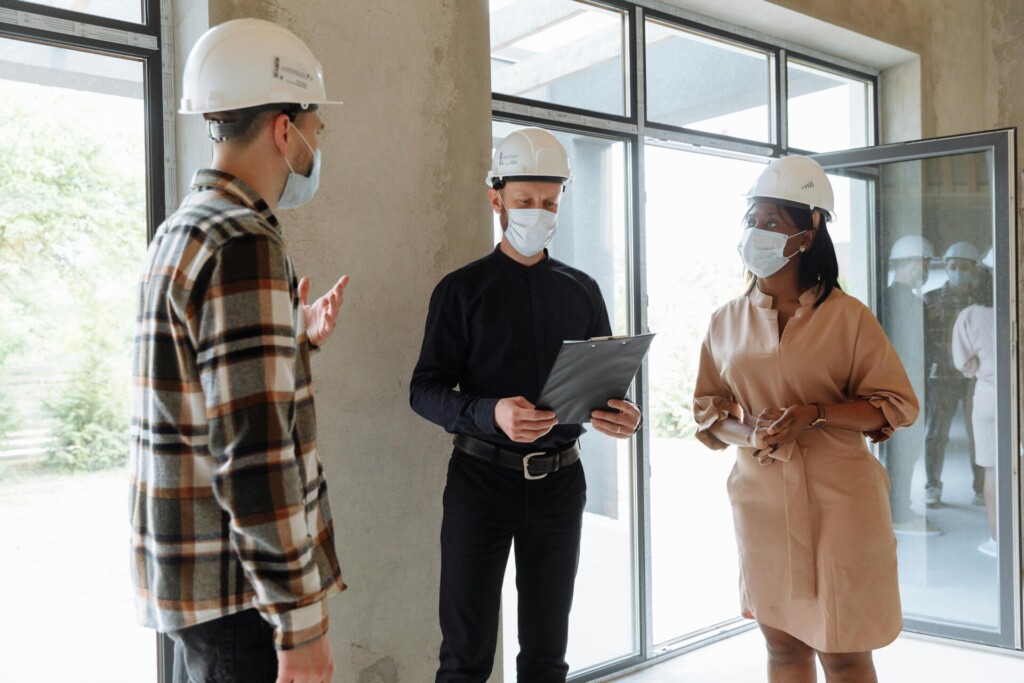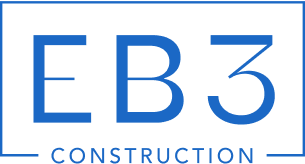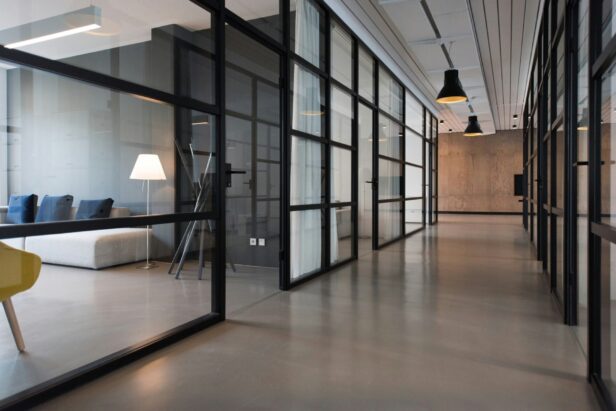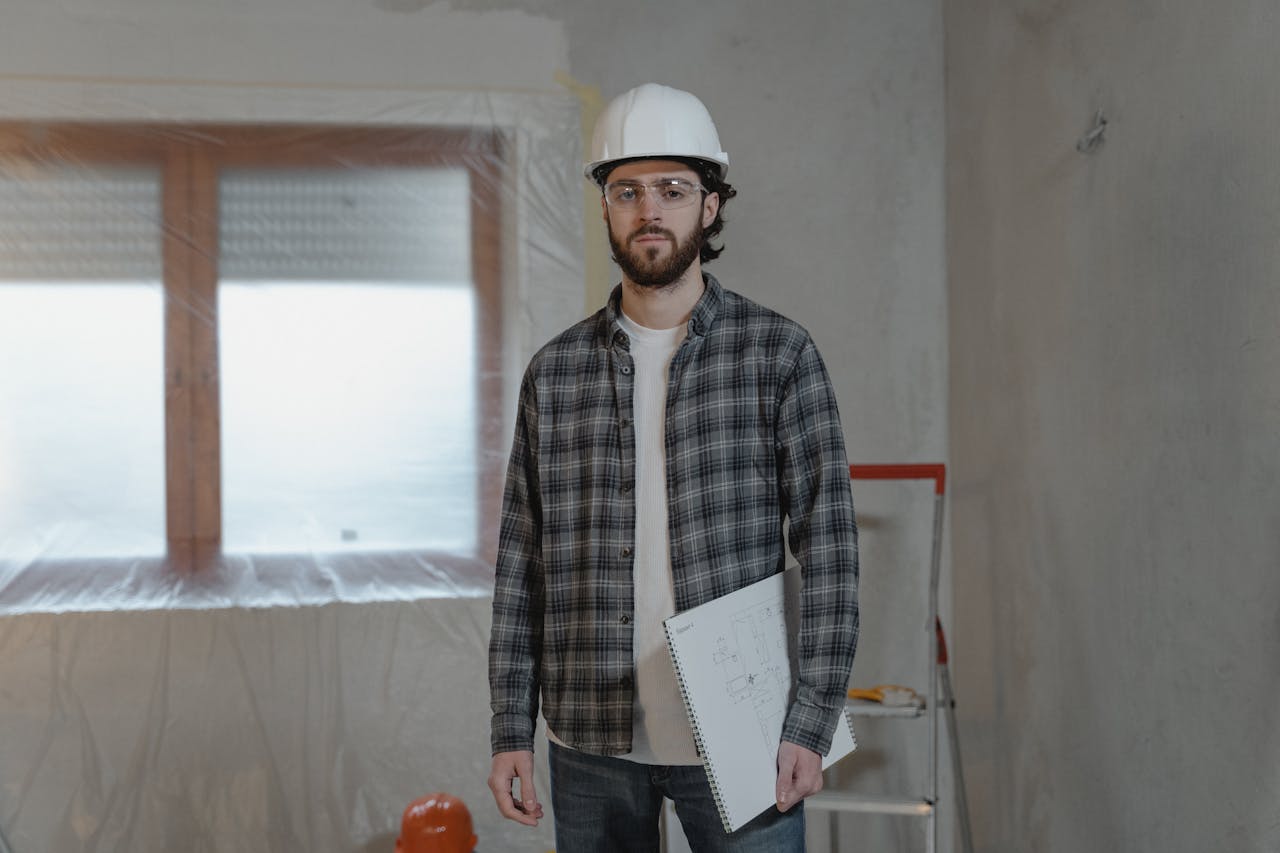In the competitive world of retail, the physical environment where customers shop plays a crucial role in their purchasing decisions. A strategically executed retail remodeling project can revitalize a location, potentially transforming it into a vibrant shopping destination that attracts customers. The current retail climate may require spaces that not only showcase products effectively but also create memorable experiences that digital shopping cannot replicate.
A comprehensive store renovation can address multiple business challenges at once. Retail environment transformations may focus on enhancing navigation pathways, optimizing product visibility, and creating intuitive layouts that guide customers naturally through the space. Physical transformations can potentially result in benefits such as increased dwell time, higher transaction values, and improved conversion rates. For property owners and developers, these improvements may translate into stronger tenant relationships and enhanced property value.
Retail remodeling isn”t solely about aesthetic updates. A construction approach that integrates form with function can ensure the redesigned space aligns with brand identity while supporting operational efficiency. Whether goals include modernizing fixtures, improving accessibility, or reconfiguring the sales floor to accommodate changing inventory needs, a thoughtfully planned renovation can lay the foundation for retail success. As customer expectations continue to evolve, the physical retail environment may need to adapt to remain relevant and compelling.
How Do You Evaluate Needs and Set Specific Goals for Your Retail Remodel?

At EB3 Construction, we understand that effective retail remodels start with a comprehensive needs assessment and clear goal-setting. We can collaborate with developers and property owners to determine the objectives of the project. This foundational work allows for efficient resource allocation and can deliver results aligned with business goals.
Conducting a Thorough Retail Space Assessment
In our approach to a retail remodel, the first step is a systematic evaluation of the existing space. We can examine traffic flow patterns, analyze customer touchpoints, and identify operational challenges that may affect sales or efficiency. Recent shifts in consumer shopping behaviors have made this evaluation crucial, as retailers may need to accommodate both traditional browsing and newer fulfillment methods like curbside pickup.
Our assessment process typically includes reviewing floor plans, observing customer movement, and consulting with store managers who have knowledge of daily operations. We pay particular attention to areas where customers congregate or appear confused, as these often represent opportunities for improvement. Additionally, we examine building systems—HVAC, electrical, and plumbing—to determine if infrastructure upgrades should be integrated into the remodel scope.
Leveraging Customer Feedback and Store Data
Quantitative and qualitative data can provide valuable insights for retail remodels. We can assist clients in interpreting point-of-sale information, customer surveys, and employee feedback to identify specific challenges and opportunities. The California Retailers Association offers resources on retail trends and best practices that may be helpful when planning renovations.
We can look beyond sales figures to understand broader patterns. Heat mapping technology allows for tracking customer movement throughout the space, potentially identifying underutilized areas or congestion points. Sales data broken down by department or product category can help determine which sections might benefit from enhanced visibility or expanded square footage. When combined with customer comments about the shopping experience, this information can form a comprehensive picture of what”s working and what may need improvement.
Implementing SWOT Analysis for Retail Remodels
A structured SWOT analysis offers an organized framework for evaluating remodeling needs and opportunities. We can guide property owners through this process to ensure key factors are considered before finalizing design plans. The four components of SWOT provide a comprehensive view of the current situation and potential outcomes:
Strengths: We can identify positive aspects of the current store that may provide competitive advantages, such as unique architectural features worth preserving, strong brand elements, or departments that consistently meet expectations. Understanding strengths ensures we maintain and enhance what”s already working well during the remodel process.
Weaknesses: Our team can help pinpoint aspects of the existing space that may create challenges, such as outdated fixtures, poor lighting, or inefficient layouts. Addressing these issues can become a primary focus of the remodel strategy to transform limitations into opportunities.
Opportunities: We can analyze external factors that could create favorable conditions for the store, including emerging market trends, changing neighborhood demographics, or new technologies that could enhance the shopping experience. The remodel can aim to capitalize on these opportunities through strategic modifications.
Threats: Our assessment can identify external factors that pose potential risks to the store”s success, such as new competitors entering the market, changing consumer behaviors, or regulatory requirements affecting retail spaces. The remodel plan can incorporate elements to address these challenges where possible.
| Strengths | Positive aspects that may provide competitive advantages, such as unique architectural features or strong brand elements. |
| Weaknesses | Aspects that may create challenges, like outdated fixtures or inefficient layouts. |
| Opportunities | External factors that could create favorable conditions, such as market trends or new technologies. |
| Threats | External risks, like new competitors or changing consumer behaviors, that could impact success. |
Translating Analysis into Actionable Remodeling Goals
After completing a thorough evaluation, we can work with property owners to translate findings into specific, measurable remodeling objectives. Effective goals are both aspirational and practical, providing clear direction for the construction team while remaining achievable within budget and timeline constraints. Here are key questions we can help clients address when setting remodel goals:
- What specific customer experience improvements are you targeting? (e.g., reducing checkout wait times, improving product visibility)
- How will the remodeled space better support operational efficiency?
- Which departments or areas require expansion, reduction, or reconfiguration?
- What aesthetic updates will best reflect your brand identity and appeal to target customers?
- How will success be measured after project completion? (e.g., sales increases, customer dwell time, efficiency metrics)
With clearly defined goals, we can create a remodel plan that addresses immediate needs while building in flexibility for future adaptations. This strategic approach aims to ensure that construction decisions support broader business objectives.
Prioritizing Remodel Elements for Maximum Impact
Most retail remodels involve balancing multiple objectives against practical constraints. Our team can help clients prioritize elements based on potential ROI, customer impact, and implementation complexity. This prioritization becomes especially valuable when working with phased remodels where construction must occur while operations continue.
We often recommend starting with high-visibility modifications that customers will immediately notice upon project completion. These changes can build momentum and positive perception, while more complex structural changes are implemented. Prioritization also allows for strategic budget allocation, helping to allocate resources toward changes that can support strong returns on investment.
Through careful evaluation, structured analysis, and strategic goal-setting, we aim to transform retail spaces to not only look better but function more effectively to support business objectives. By thoroughly understanding current needs and future aspirations, we strive to create remodeled environments that enhance the customer experience.
What Retail Renovation Options Should You Consider?
When approaching a retail renovation project, we thoroughly analyze the scope and scale of changes needed to meet your specific business objectives. At EB3 Construction, we can guide property owners through the renovation process, helping them explore the various options available for revitalizing their retail spaces.
Cosmetic Upgrades: High-Impact Visual Improvements
Cosmetic renovations can deliver significant visual impact while causing minimal disruption to your operations. These projects typically involve changes that refresh your store”s appearance without structural modifications. The recent trend of incorporating biophilic design elements has made living walls and natural materials particularly effective in creating inviting retail environments.
Cosmetic upgrades may include modern paint schemes, updated lighting systems that enhance product visibility, replacement of fixtures with contemporary designs, and installation of new flooring materials. These modifications can help enhance the overall customer experience, especially when timed during slower business periods.
Strategic signage replacements inside and outside your store can modernize your brand presentation. We can coordinate signage installation to minimize disruption to operations, a key consideration for businesses that aim to avoid extended closures.
Layout Redesigns: Reimagining the Customer Journey
Layout redesigns require more investment but can transform how customers interact with your space. We can begin these projects by analyzing current customer flow patterns and identifying potential congestion points or underutilized areas within your store.
This type of project typically involves reconfiguring walls, relocating entry points, or revising checkout areas to improve traffic flow. For retailers adapting to changing consumer behaviors, we can implement areas dedicated to online order pickups, an increasingly essential feature in the post-pandemic retail landscape. The National Retail Federation reports that 70% of consumers now use buy-online-pickup-in-store options.
Modern retail layout redesigns frequently incorporate technology integration points. We can build infrastructure for digital displays, interactive kiosks, and connectivity solutions that support both customer-facing applications and backend inventory systems. In the grocery sector, layout redesigns often emphasize expanded prepared food sections and experiential shopping zones.
Equipment and Technology Upgrades
Upgrading equipment and technology systems represents a moderate investment that can improve operational efficiency. We can coordinate the installation of advanced refrigeration systems with reduced energy consumption, modern POS equipment to streamline checkout processes, and security systems that protect both inventory and customer data.
For food retailers, we can manage projects replacing refrigeration cases with energy-efficient models that may reduce utility costs and enhance product display. Refrigeration upgrades can potentially result in energy savings while also improving food safety compliance.
Smart building technology integration is also gaining traction in retail renovations. We can install automated lighting controls, occupancy-based HVAC systems, and centralized building management interfaces that allow for remote monitoring and adjustment. These systems may offer operational savings while supporting sustainability initiatives.
Store Expansions: Creating New Possibilities
Store expansion projects represent a comprehensive retail renovation option, requiring careful planning and substantial investment. We can manage expansions that increase your retail footprint through adjacent space acquisition, mezzanine additions, or full building extensions.
When executing expansions, we coordinate architectural planning, structural engineering, and construction sequencing to minimize disruption to ongoing operations. The current construction material challenges require proactive procurement strategies to secure critical materials early in the project timeline, preventing delays due to supply chain issues.
Expanding into adjacent spaces often requires complex utility relocations and upgrades to electrical systems. Our team can handle permitting processes, code compliance verification, and coordination with local authorities. We can navigate zoning variance processes for retailers expanding into buildings with special requirements, balancing preservation needs with modern retail demands.
Phased Implementation Strategies
Regardless of the renovation scale, we recommend phased implementation approaches to minimize customer disruption. Strategic scheduling during off-hours or slower business periods helps maintain revenue streams throughout the renovation process. This approach can be particularly effective for retailers who aim to avoid extended closures.
We can develop detailed construction sequencing plans that isolate work zones while maintaining safe customer pathways through the rest of the store. For major renovations, temporary wayfinding systems and clear communication about available services become essential parts of the customer experience during construction.
Supply chain disruptions remain a significant consideration in 2024 renovation planning. We build realistic timelines that account for extended lead times on key materials and equipment. When material shortages impact renovation projects, we can work with clients to develop temporary solutions that maintain visual appeal while awaiting final materials.
| Approach | Cost | Timeline | Business Impact |
|---|---|---|---|
| Renovation | $180 to $220 per square foot | Shorter | Quicker resumption of business, cost savings |
| New Construction | $18 to $45 per square foot | Extended | Customization, potential long-term returns |
Disclaimer: Pricing figures are based on publicly available market data and are intended for general estimation purposes as of March 2024. They do not represent a formal quote from EB3 Construction. Actual costs will vary by project scope, location, labor rates, and material prices.
Sustainability Considerations in Retail Renovations
Environmental sustainability is now essential in retail construction. We can integrate energy-efficient systems, sustainable materials, and waste reduction strategies into renovation projects. These approaches may reduce environmental impact and generate long-term operational savings.
LED lighting conversions are one of the most cost-effective sustainability upgrades, often resulting in significant energy savings and reduced maintenance costs. Water-efficient plumbing fixtures, low-VOC finishes, and recycled content materials can be standard in retail renovations.
For retailers pursuing formal sustainability certifications, we can manage the documentation and verification processes required by LEED, Green Globes, or other recognition programs. Our data collection and systems commissioning procedures aim to ensure efficiency goals established during design are achieved in operation.
How Do You Budget and Assemble the Right Team for Your Retail Remodel?

Developing a realistic budget is key to any successful retail remodel. We approach each renovation project with careful financial planning, accounting for both immediate construction costs and long-term return on investment. A well-executed store renovation is more than just an expense—it”s a strategic investment in your retail operation”s future.
The impact of thoughtful remodeling can be substantial. According to research from Monash University, businesses that underwent strategic renovations saw sales to new customers increase by an impressive 43-44%, while existing customer sales grew by 7-10%. These figures highlight the critical importance of proper budgeting and team assembly in the remodeling process.
Creating Your Remodeling Budget
When developing budgets for retail clients, it”s important to start with a comprehensive assessment of project requirements. Typical costs for retail renovations can vary widely, ranging from $50 to $250 per square foot, depending on project scope, materials quality, and regional labor rates.
Effective budgeting typically involves allocating funds across several key categories. This may include construction labor, materials, fixtures and equipment, design and permits, and importantly, a contingency fund for unexpected issues that can arise during commercial renovations. The complexity of retail spaces—with specialized lighting, display areas, and customer flow considerations—makes this contingency particularly important.
When evaluating financing options for your project, it can be helpful to consider whether traditional bank loans, SBA loans, or utilizing operating capital might be appropriate for your situation. The projected ROI timeline is crucial in this decision, as it”s important to analyze how quickly the renovation can pay for itself through increased sales and operational efficiencies.
Assembling Your Dream Team
The success of your retail remodel depends on the quality of professionals executing the work. It”s beneficial to coordinate with specialists who understand the unique challenges of retail construction—particularly the importance of minimizing disruption to your daily operations. Your team composition may vary based on project complexity, but typically includes:
A retail-focused designer shapes the aesthetic and functional aspects of your renovation. They create comprehensive plans for layout, color schemes, lighting, and materials selection. Their expertise can help ensure your space not only looks appealing but also functions efficiently to maximize sales per square foot. Designers familiar with retail environments understand customer flow patterns and how physical space influences purchasing behavior.
The general contractor acts as the project manager, coordinating all construction aspects and subcontractors. They handle permitting, material sourcing, equipment procurement, and maintain quality control throughout the project. It”s often beneficial to select contractors with specific retail experience who understand the importance of clean, safe worksites—especially when renovating during business hours.
For more complex renovations involving structural changes, an engineer ensures integrity and code compliance. They evaluate load-bearing capacity, fire resistance, and energy efficiency considerations. Their expertise can be particularly valuable when expanding retail spaces or reconfiguring major systems like HVAC or electrical.
Selecting the Right Partners
Successful team selection often goes beyond technical qualifications. Communication style and cultural fit can significantly impact project outcomes. When assembling a remodeling team, it can be helpful to evaluate potential partners on several key criteria:
Relevant experience is crucial. Prioritizing professionals with proven track records specifically in retail environments similar to yours can be beneficial. This specialized experience means they may better understand the unique challenges of maintaining merchandise protection, managing customer safety, and working within the constraints of retail schedules. Thoroughly examining portfolios, reviews, and references with an eye toward retail-specific expertise can be valuable.
Clear communication practices often contribute to successful projects. Evaluating how potential team members handle information sharing, problem reporting, and regular updates can be insightful. Teams that establish daily progress meetings, especially after overnight construction shifts, may maintain better project momentum and address issues promptly.
Budget management capabilities are essential, as retail projects often operate within tight financial constraints. Looking for professionals who provide transparent, detailed quotes and demonstrate histories of completing similar projects within budget parameters can be advantageous. Those who proactively identify potential cost overruns and offer alternatives may show valuable financial stewardship.
By carefully budgeting and assembling the right team, you can create the foundation for a successful retail remodel aimed at enhancing your store”s appeal and supporting a strong return on investment. This strategic approach aims to ensure your renovation not only refreshes your space but genuinely supports your business objectives through increased customer engagement and sales growth.
What Are the Final Steps in Planning, Permitting, and Executing Your Store Remodel?
Developing Your Project Plan
The final phase of a store remodel typically begins with comprehensive planning. A well-developed project plan can include detailed timelines that account for various aspects of construction, from demolition to fixture installation. Effective project plans often identify the sequence, duration, and dependencies of each task to help minimize disruptions to store operations while maintaining construction efficiency.
A phased implementation approach may be recommended, especially for stores that aim to remain operational during renovation. This approach can allow for construction zones to be cordoned off while maintaining customer access to other areas. The planning phase may also include coordinating with vendors, establishing delivery schedules, and finalizing material selections that align with both brand identity and functional requirements.
When creating a project plan, it”s often advisable to build in contingencies for unexpected challenges. Recent supply chain disruptions have highlighted the importance of planning for realistic lead times on specialty materials and equipment to help prevent delays.
The Permitting Process
Obtaining the necessary permits can be one of the more complex parts of the store remodeling timeline. The permitting process typically involves documentation preparation, submission, and follow-up with local authorities. Familiarity with jurisdiction-specific requirements can be beneficial in navigating this process efficiently.
The permitting phase usually requires compliance with local building codes, zoning regulations, health department standards, fire safety requirements, and accessibility guidelines. Preparing for parallel processing of different permit types may help accelerate the timeline. For retail remodels involving food service areas, additional health department approvals may be needed while other permits are being processed.
Recent changes to energy codes have added new considerations to the permitting process. Many jurisdictions now require energy-efficient lighting and HVAC systems as part of renovation permits. Staying current with these evolving standards can help ensure projects meet all requirements without the need for costly redesigns after submission.
| Store Type | Permitting Duration | Notes |
|---|---|---|
| Convenience Store | Permitting may include coordination for fuel system upgrades. | |
| Supermarket | May include specialized requirements for fresh food environments and sustainability features. |
Executing the Remodel
Once permits are secured, the construction phase can be implemented according to the established timeline. Site supervision typically involves coordinating daily activities, managing subcontractors, and maintaining communication with store management. This oversight can help ensure quality control and allow for quick resolution of issues that may arise during construction.
Material staging areas are often carefully planned to minimize interference with customer traffic patterns while providing efficient access for construction crews. For phased implementations, clear work schedules that align with lower-traffic periods and coordinate noise-generating activities can help minimize customer impact.
Safety protocols should remain a top priority throughout execution. Establishing clear boundaries between construction zones and customer areas, maintaining proper dust containment, and ensuring all contractors follow OSHA guidelines are important considerations. For grocery remodels, additional measures may be implemented to protect food preparation areas from construction debris and contamination.
Industry-Specific Execution Considerations
Convenience Store Execution
When executing convenience store remodels, the focus is often on optimizing layouts for quick shopping experiences. This may involve reconfiguring checkout areas to improve traffic flow and reduce congestion during peak hours. Refrigeration and equipment upgrades typically require careful coordination to minimize downtime for critical revenue-generating sections.
The 24/7 nature of many convenience operations presents unique challenges. Scheduling the most disruptive work during overnight hours when customer traffic is lowest is a common approach. For fuel service stations, close coordination with petroleum contractors can help ensure fuel system upgrades comply with environmental regulations while maintaining at least partial service throughout the renovation.
Digital signage and technology integration have become standard elements in convenience store remodels. Ensuring proper infrastructure for POS systems, inventory management technologies, and customer-facing digital displays, with adequate testing periods before full implementation, is often part of the process.
Supermarket Execution
Supermarket remodels typically require careful phasing to maintain operations while transforming the space. A common approach is to tackle the project by department, starting with less disruptive areas before addressing high-traffic sections like produce and checkout. Temperature-controlled environments for fresh foods demand specialized construction approaches to maintain food safety standards throughout the renovation.
Modern supermarkets increasingly incorporate specialty sections, such as prepared foods and organic offerings, and experiential shopping areas. Execution plans often accommodate these diverse requirements, from proper ventilation for cooking areas to specialized lighting for produce displays. The integration of sustainability features, such as energy-efficient refrigeration systems and LED lighting, may require coordination with specialized vendors and commissioning experts.
Customer communication is particularly important during supermarket renovations. Implementing clear directional signage, updated store maps, and informational displays that explain the improvements underway can help maintain customer loyalty despite temporary inconveniences during construction.
Project Closeout and Transition
As construction nears completion, thorough inspections using detailed punch lists can help identify any remaining items needing attention. This quality control process aims to ensure all work meets both code requirements and expectations before final acceptance. Coordinating final inspections with relevant authorities is typically necessary to obtain certificates of occupancy or completion as required.
The transition period often includes training store personnel on new systems, providing documentation for maintenance requirements, and establishing warranty information for all installed equipment. A soft opening period, when possible, can allow staff to become familiar with the new layout and systems before full customer traffic resumes.
A comprehensive closeout process typically includes collecting and organizing all project documentation, such as as-built drawings, equipment manuals, warranty information, and maintenance schedules. This package can provide resources needed for ongoing operations and future modifications to the newly remodeled space.
Conclusion: Transforming Your Retail Space for Success

Retail remodeling involves a significant investment that extends beyond mere aesthetic enhancements. We can guide property owners through this process, balancing potential disruptions with opportunities for improved customer engagement and sales performance. Our construction teams aim to carefully sequence work to minimize operational impacts while maximizing transformation potential. This may include implementing strategic pathways that guide shoppers naturally or installing specialized lighting systems to highlight merchandise.
The potential of retail transformation lies in thoughtfully integrating construction elements with business objectives. By coordinating with retailers on sensory details—from optimizing natural light to designing effective acoustics—we can create environments that may encourage longer visits and increased purchases. Construction decisions, from floor plan adjustments to fixture placement, can influence how customers interact with products and their purchasing behavior. When approached strategically, the construction process can become a valuable business investment.
Ready to evaluate your retail space”s transformation potential? Contact our construction team today.




